Ashta Vinayak: The Forgotten 8 Forms of Ganesha And Why They’re Worshipped
Riya Kumari | Aug 27, 2025, 13:34 IST
( Image credit : Timeslife )
To remember these eight forms is to remember that God meets us in many ways, sometimes as a protector, sometimes as a disciplinarian, sometimes as a loving child. The journey of Ashta Vinayak is the journey of life itself: moving from struggle to wisdom, from fear to faith, from self to Self.
In every Hindu home, the name of Lord Ganesha is called before any beginning. He is Vighnaharta, the remover of obstacles, the guardian of dharma, and the one who makes the path smooth for every soul that seeks light. But what many of us do not know is that Ganesha is not worshipped in just one form. The ancient scriptures and traditions of Maharashtra speak of Ashta Vinayak, the eight sacred forms of Ganesha, each rooted in a story from the Puranas and carrying a lesson deeper than ritual. The Mudgala Purana and the Skanda Purana describe Ganesha as infinite, beyond form, yet compassionate enough to manifest in many ways to guide human beings. The eight forms known as Ashta Vinayak are not separate gods but different revelations of the same truth, that life is filled with challenges, illusions, pride, humility, and ultimately, liberation. To undertake the Ashta Vinayak yatra is not just a pilgrimage of distance, but a journey of understanding. Let us walk through each form, not merely as a traveler, but as a seeker.
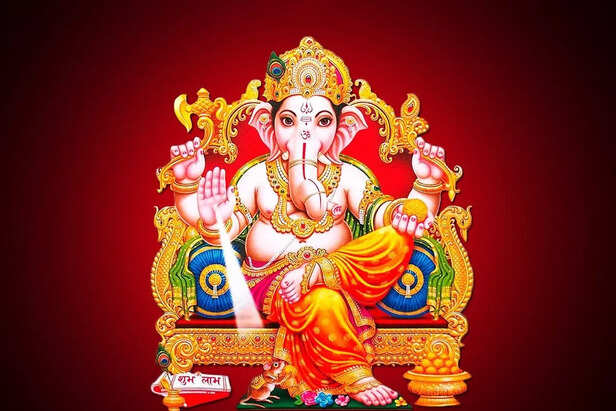
The story says that Ganesha defeated the demon Sindhu riding a peacock, symbolizing victory over desire. Moreshwar represents the courage to begin with purity. Every spiritual journey starts by controlling desire, without this, even wisdom becomes clouded.
To win over life’s demons, one must first tame the restless mind.
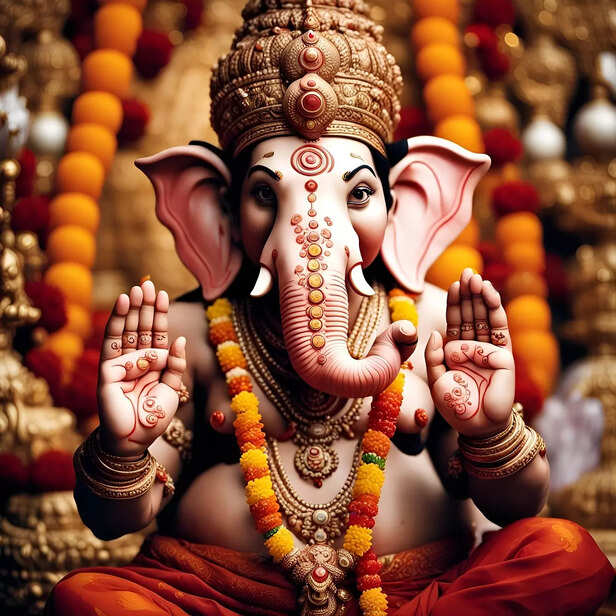
It is said that Vishnu himself worshipped this form to receive the strength to destroy the demons Madhu and Kaitabha. Here, Ganesha is worshipped for siddhi, not just success, but mastery of self.
True accomplishment is not in conquering the world, but in conquering one’s own weaknesses.

Ballaleshwar is the only form named after a devotee, the child Ballal, whose pure devotion moved Ganesha to stay in Pali forever. Unlike other forms, this teaches us that God is not impressed by wealth or power, but by faith that is childlike and unshaken.
The heart of a devotee has more strength than rituals performed without love.
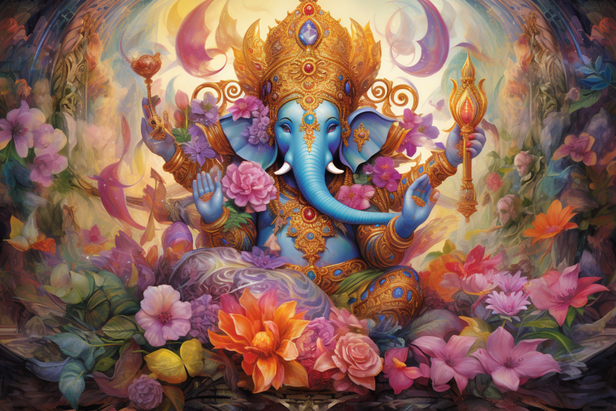
This form grants wishes, but the scriptures remind us: every boon comes with responsibility. Varadvinayak embodies generosity, but also warns us not to misuse blessings, for uncontrolled desires can bind us further.
What we ask from God must be guided by wisdom, not impulse.

When the jewel Chintamani was restored to Sage Kapila by Ganesha, the sage realized that the real jewel was not in hand but in heart, freedom from anxiety. This form teaches detachment and peace of mind.
Wealth may be stolen, but inner contentment cannot be taken away.
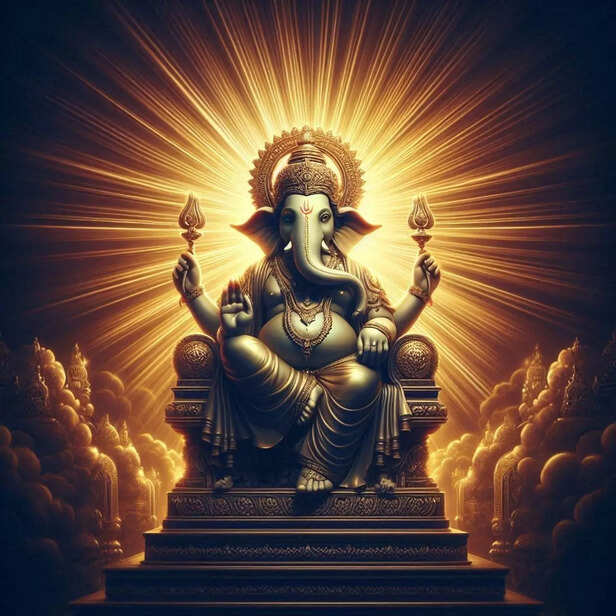
This is the only form worshipped in a mountain cave. Here, Ganesha appeared as Parvati’s son after her penance. He symbolizes discipline and endurance, as even today devotees must climb 283 steps to reach him.
Spiritual growth demands effort, there are no shortcuts to the divine.
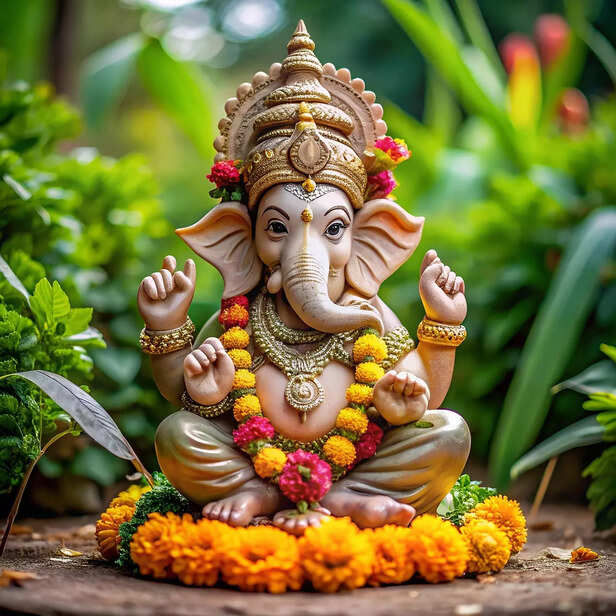
When the demon Vighnasura was troubling the gods, Ganesha subdued him and made him promise never to disturb those who worship. This is why he is called Vighneshwar.
Obstacles will always appear, but faith converts them into stepping stones.
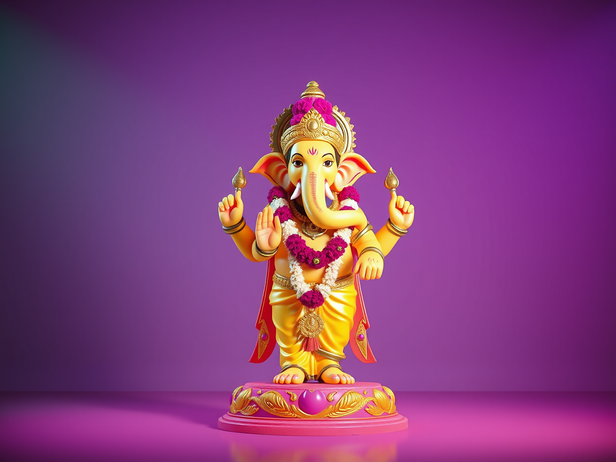
The Shastras say that Shiva himself prayed to this form before fighting Tripurasura. Mahaganapati represents ultimate power, the union of wisdom and strength.
Wisdom without strength is fragile; strength without wisdom is dangerous. Balance is the key.
The Ashta Vinayak forms are not just temples scattered across Maharashtra, they are milestones of spiritual realization. Each form addresses a weakness of the human mind: desire, pride, restlessness, greed, fear, impatience, ignorance, and imbalance. To bow before all eight is to remind oneself that life is not about avoiding difficulties but transforming them. The Ganesha Atharvashirsha declares: “Tvam eva sarvam khalvidam brahma”, “You alone are all this, indeed Brahman.” The eight forms remind us that while Ganesha appears in many ways, the essence is one: to guide us from darkness to clarity, from struggle to surrender.
When we speak of Ganesha as Vighnaharta, it is not that he magically removes problems. Rather, he transforms us so that what once looked like an obstacle becomes a teacher. The Ashta Vinayak temples stand as timeless reminders that life’s challenges are not punishments, but opportunities to return closer to our divine nature.
1. Moreshwar (Morgaon) – The Beginning

Ganesh
( Image credit : Pixabay )
The story says that Ganesha defeated the demon Sindhu riding a peacock, symbolizing victory over desire. Moreshwar represents the courage to begin with purity. Every spiritual journey starts by controlling desire, without this, even wisdom becomes clouded.
To win over life’s demons, one must first tame the restless mind.
2. Siddhivinayak (Siddhatek) – The Granter of Siddhi

Lord ganesha
( Image credit : Pixabay )
It is said that Vishnu himself worshipped this form to receive the strength to destroy the demons Madhu and Kaitabha. Here, Ganesha is worshipped for siddhi, not just success, but mastery of self.
True accomplishment is not in conquering the world, but in conquering one’s own weaknesses.
3. Ballaleshwar (Pali) – Devotion Above All

Lord ganesh
( Image credit : Pixabay )
Ballaleshwar is the only form named after a devotee, the child Ballal, whose pure devotion moved Ganesha to stay in Pali forever. Unlike other forms, this teaches us that God is not impressed by wealth or power, but by faith that is childlike and unshaken.
The heart of a devotee has more strength than rituals performed without love.
4. Varadvinayak (Mahad) – The Giver of Boons

Shri ganesh
( Image credit : Pixabay )
This form grants wishes, but the scriptures remind us: every boon comes with responsibility. Varadvinayak embodies generosity, but also warns us not to misuse blessings, for uncontrolled desires can bind us further.
What we ask from God must be guided by wisdom, not impulse.
5. Chintamani (Theur) – Peace Beyond Possession

Bappa
( Image credit : Pixabay )
When the jewel Chintamani was restored to Sage Kapila by Ganesha, the sage realized that the real jewel was not in hand but in heart, freedom from anxiety. This form teaches detachment and peace of mind.
Wealth may be stolen, but inner contentment cannot be taken away.
6. Girijatmaj (Lenyadri) – The Son of Parvati

Ganpati
( Image credit : Pixabay )
This is the only form worshipped in a mountain cave. Here, Ganesha appeared as Parvati’s son after her penance. He symbolizes discipline and endurance, as even today devotees must climb 283 steps to reach him.
Spiritual growth demands effort, there are no shortcuts to the divine.
7. Vighneshwar (Ozar) – The Remover of Obstacles

Ganpati Bappa
( Image credit : Pixabay )
When the demon Vighnasura was troubling the gods, Ganesha subdued him and made him promise never to disturb those who worship. This is why he is called Vighneshwar.
Obstacles will always appear, but faith converts them into stepping stones.
8. Mahaganapati (Ranjangaon) – The Great Protector

Jai ganesh
( Image credit : Pixabay )
The Shastras say that Shiva himself prayed to this form before fighting Tripurasura. Mahaganapati represents ultimate power, the union of wisdom and strength.
Wisdom without strength is fragile; strength without wisdom is dangerous. Balance is the key.
Why They’re Worshipped Together
When we speak of Ganesha as Vighnaharta, it is not that he magically removes problems. Rather, he transforms us so that what once looked like an obstacle becomes a teacher. The Ashta Vinayak temples stand as timeless reminders that life’s challenges are not punishments, but opportunities to return closer to our divine nature.
